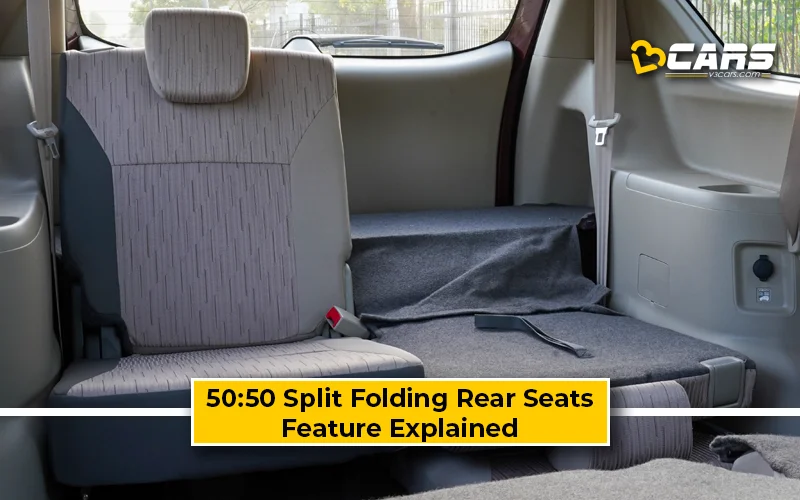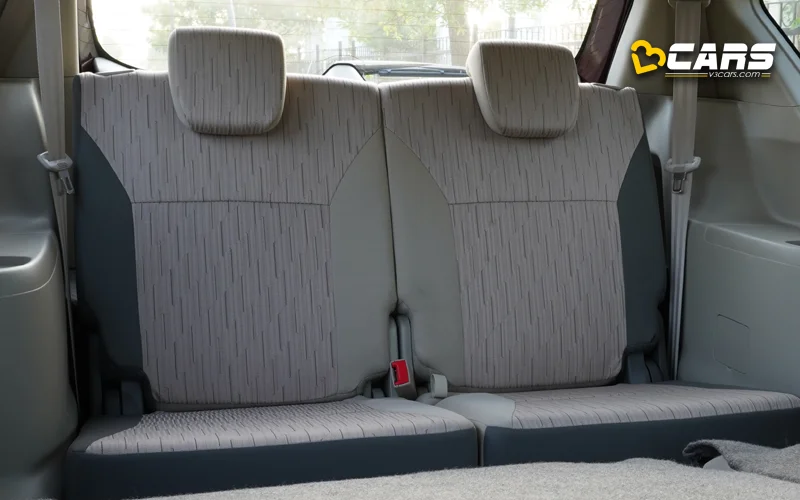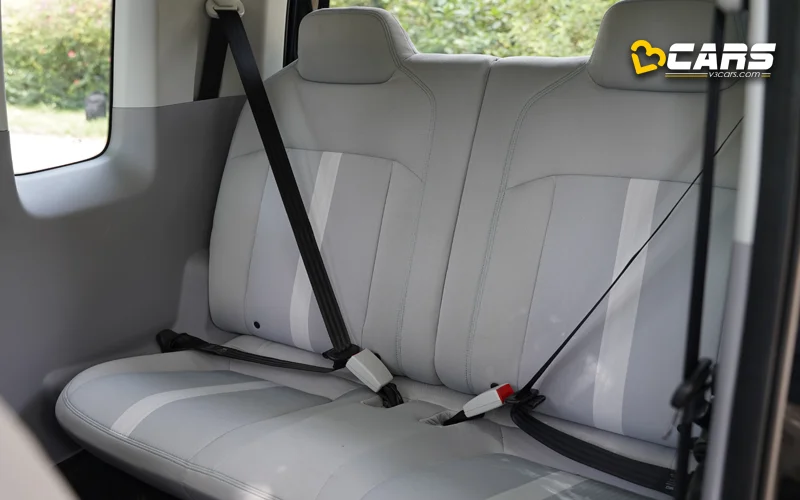50:50 Split Folding Rear Seats: Feature Explained
In this Feature Explained article, we’ll focus specifically on the 50:50 split folding rear seat configuration, a practical feature found in a variety of vehicles. We’ll explore its functionality, advantages, and how it caters to specific cargo and passenger needs. Understanding this option will help you determine if it aligns with your lifestyle and transportation requirements.

What Are 50:50 Split Folding Rear Seats?
50:50 split folding rear seats refer to a rear seating configuration where the bench is divided into 2 equal halves. Each half can be folded down independently, allowing for a balanced combination of passenger and cargo space.
How Do 50:50 Split Folding Rear Seats Work?
The operation is straightforward:
- Release Mechanism: Each half of the rear seat typically has a release mechanism, often a lever or button located on the seat itself or in the boot.
- Folding Action: Once the release mechanism is activated, the corresponding seat half can be folded down, usually forward, to create a flat or near-flat cargo surface.
- Independent Operation: Both halves operate independently, allowing for flexible configurations.
What Are The Advantages Of 50:50 Split Folding Rear Seats?
- Balanced Flexibility: The equal division of the rear seat provides a balanced compromise between passenger and cargo space. You can fold down one half for larger items while still accommodating one rear passenger.
- Simplified Cargo Management: The equal halves make it easier to organise and distribute cargo, especially when dealing with items of similar size.
- Accessibility: In smaller vehicles, a 50:50 split can make it easier to access items stored in the boot from inside the car.
- Symmetry: The symmetrical division can be aesthetically pleasing and create a more organised cargo area.
- Ideal for Specific Cargo: This configuration works well for carrying items that require roughly half the rear seat space, leaving the other half for a passenger.
What Are The Disadvantages Of 50:50 Split Folding Rear Seats?
- Less Versatile Than 40:20:40: Compared to a 40:20:40 split, the 50:50 configuration offers less flexibility for carrying long, narrow items while accommodating multiple passengers.
- Limited Long Item Accommodation: If you frequently need to carry longer items, a 50:50 split might not be the most efficient option.
- Potential for Uneven Cargo Floor: Depending on the vehicle’s design, the folded seats might not create a perfectly flat cargo floor.
Also Read: 60:40 Split Folding Rear Seats – Feature Explained
When Is A 50:50 Split Ideal?
- Small City Cars: 50:50 splits are often found in smaller city cars and hatchbacks, where maximizing cargo space is essential. The MG Comet EV is an example of a city car that offers 50:50 spit rear seats in India. Other examples include the Maruti Ertiga and Mahindra Scorpio-N’s rear most seat backs.
- Vehicles with Limited Space: In vehicles with limited cargo space, a 50:50 split provides a practical solution for occasional larger loads.
- Balanced Passenger/Cargo Needs: If you frequently switch between carrying passengers and cargo, a 50:50 split offers a good compromise.

50:50 split folding rear seats offer a balanced and practical solution for maximising cargo space while maintaining some passenger capacity. While it might not be as versatile as a 60:40 split, it excels in simplicity and provides a valuable feature for various driving needs, especially in smaller vehicles.
Note: Check your Car EMI with our - Car Loan EMI Calculator
You can use our Fuel Cost Calculator to see how much any petrol, diesel or CNG car will cost to run based on the latest fuel price in your city.



0 Comments